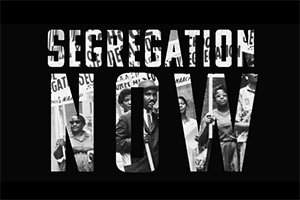Segregation Now
In Tuscaloosa today, nearly one in three black students attends a school that looks as if Brown v. Board of Education never happened.

This story is not subject to our Creative Commons license.
Though James Dent could watch Central High School’s homecoming parade from the porch of his faded white bungalow, it had been years since he’d bothered. But last fall, Dent’s oldest granddaughter, D’Leisha, was vying for homecoming queen, and he knew she’d be poking up through the sunroof of her mother’s car, hand cupped in a beauty-pageant wave, looking for him.
So, at about 4:30 in the afternoon on October 18, Dent, age 64, made his way off the porch and to the curb along Martin Luther King Jr. Boulevard in the West End of Tuscaloosa, Alabama. Soon he could hear the first rumblings of the band.
There was a time, little more than a decade ago, when the Central High School homecoming parade brought out the city. The parade started in the former state capital’s lively downtown and seemed to go on for miles. The horns of one of the state’s largest marching bands, some 150 members strong, would bounce off the antebellum mansions along the streets. Revelers—young and old, black and white, old money and no money—crowded the sidewalks to watch the elaborate floats and cheer a football team feared across the region.
Central was not just a renowned local high school. It was one of the South’s signature integration success stories. In 1979, a federal judge had ordered the merger of the city’s two largely segregated high schools into one. The move was clumsy and unpopular, but its consequences were profound. Within a few years, Central emerged as a powerhouse that snatched up National Merit Scholarships and math-competition victories just as readily as it won trophies in football, track, golf. James Dent’s daughter Melissa graduated from Central in 1988, during its heyday, and went on to become the first in her family to graduate from college.
But on that sunlit day last October, as Dent searched for Melissa’s daughter in the procession coming into view, he saw little to remind him of that era. More caravan than parade, Central’s homecoming pageant consisted of a wobbly group of about 30 band members, some marching children from the nearby black elementary schools, and a dozen or so cars with handwritten signs attached to their sides. The route began in the predominantly black West End and ended a few blocks later, just short of the railroad tracks that divide that community from the rest of the city.
The reason for the decline of Central’s homecoming parade is no secret. In 2000, another federal judge released Tuscaloosa City Schools from the court-ordered desegregation mandate that had governed it for a single generation. Central had successfully achieved integration, the district had argued—it could be trusted to manage that success going forward.
Freed from court oversight, Tuscaloosa’s schools have seemed to move backwards in time. The citywide integrated high school is gone, replaced by three smaller schools. Central retains the name of the old powerhouse, but nothing more. A struggling school serving the city’s poorest part of town, it is 99 percent black. D’Leisha, an honors student since middle school, has only marginal college prospects. Predominantly white neighborhoods adjacent to Central have been gerrymandered into the attendance zones of other, whiter schools.
Tuscaloosa’s schools today are not as starkly segregated as they were in 1954, the year the Supreme Court declared an end to separate and unequal education in America. No all-white schools exist anymore—the city’s white students generally attend schools with significant numbers of black students. But while segregation as it is practiced today may be different than it was 60 years ago, it is no less pernicious: in Tuscaloosa and elsewhere, it involves the removal and isolation of poor black and Latino students, in particular, from everyone else. In Tuscaloosa today, nearly one in three black students attends a school Segregation Now - ProPublica:
